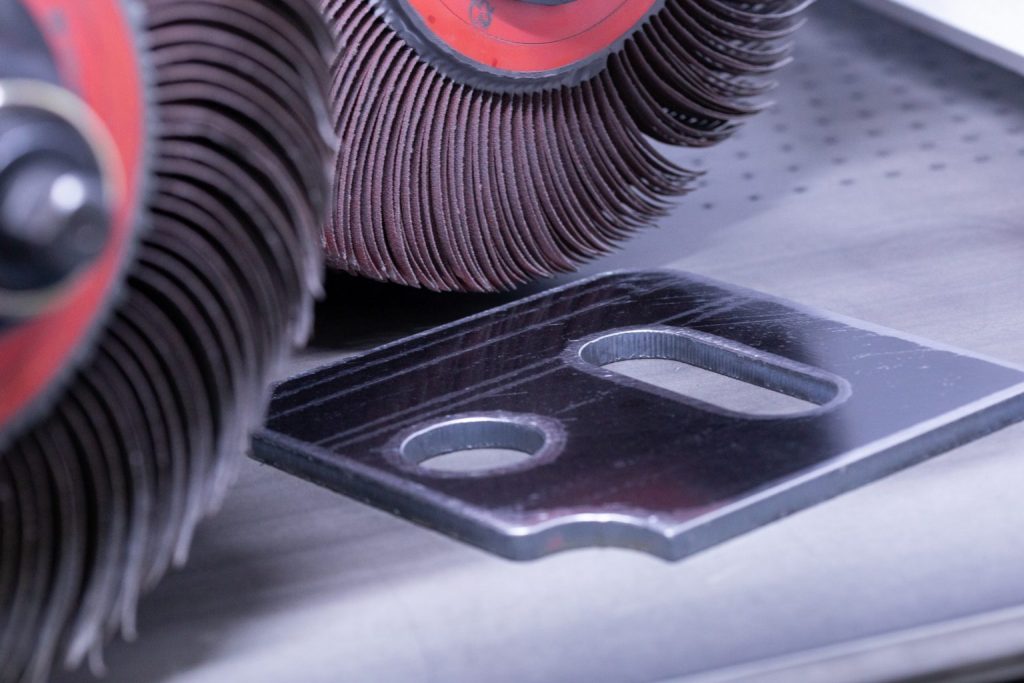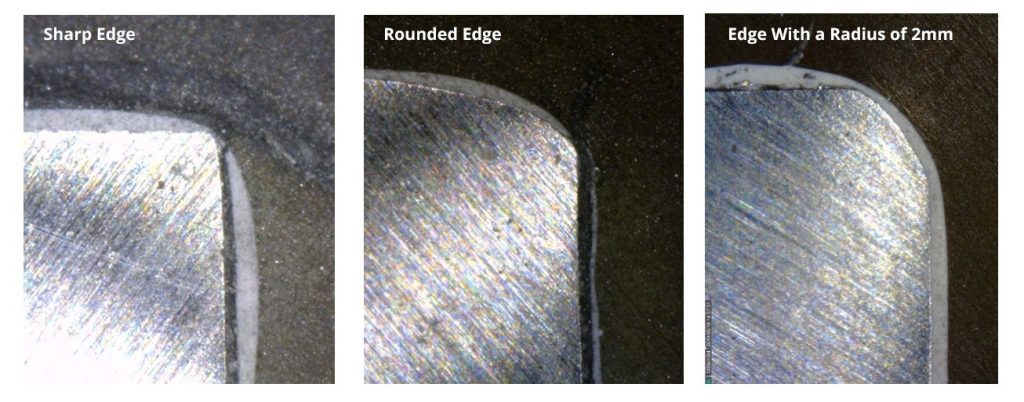Edge Rounding Basics
Sharp edges and corners on sheet metal can be caused when metal parts are stamped, punched, milled or on parts cut by laser, plasma, water jet or guillotine shear. These sharp edges can cause serious injuries during the processing by hand or during assembly. The edge rounding will not only protect the workers from the sharp edges but will also protect the machine that processes the product. Moreover, rounded edges are often needed due to health and safety requirements in industries such as food service and medical device.
SURFACE TREATMENTS ON SHEET METAL
When metal parts are being prepared for surface treatments, for example powder coating or welding, it is required to have good edge coverage.
Rounded edges and corners to a certain radius make sure that the thickness of the surface is the same as on the rest of the surface. A radius is the angle of the bend, measured between the bent flange and its original position. In the photos below, you can see how well the coating adheres to the part.
HOW DOES MECHANICAL EDGE ROUNDING TAKE PLACE?
Although edge rounding can be done manually, the best and most consistent quality is achieved with mechanical edge rounding. The consistency of the products will no longer depend on the skills of the workers and is instead done automatically to ensure a consistent finish.
The corner rounding machine could have several attachments that can break the edge or even round the edge to a certain radius:
- Top Brushes: The machine can be equipped with top brushes that rotate in opposite directions. They create a large rounding and affect the part’s surface. Therefore, the brushes also leave a quality finish.
- Drums: Abrasive drums that are used for deburring can also break the edges of metal parts.
- Rotary Brushes: Rotary brushes are attached to a rotary carousel and have abrasive flaps that are flexible, thus rounding the whole edges, while leaving the surface unharmed.
The results are uniform deburred and rounded edges. It is the best attachment to get a perfect radius. These rotary brush machines are available from 43” to 63” working widths.
ADVANTAGES OF MECHANICAL EDGE ROUNDING
- It saves time, labor and costs compared to manual edge rounding.
- The metal part gets a uniform edge round that makes it suitable for coating, welding or other surface treatments.
- These machines can achieve a radius of up to .080”.
TIMESAVERS EDGE ROUNDING MACHINE
Timesavers offers numerous solutions for edge rounding. The machines can process parts as small as 2×2”. These small parts are kept in place by the machine’s vacuum bed.

The most important innovation of Timesavers for edge rounding is the rotary brush. The rotary brushes create a uniform radius of .080” (2mm) on different types of metal.
By precisely processing the metal components in a machine, the edges are all consistently rounded. The abrasives hit against the sheet metal and round the edges. The result is an equal radius on materials such as stainless steel, aluminum, zinc, and more.
Timesavers also offers different configurations, that can include additional application processes. In order to have a metal deburring machine and edge rounding machine, a belt and rotary brushes are required. This configuration is ideal for components with burrs and sharp edges.
The rotary brush edge rounding compartment can be also combined with a Scotch-Brite belt, making it a finishing machine also. In order to deburr the part and get a double-sided edge round with a finish, it must be rotated and run through twice.

